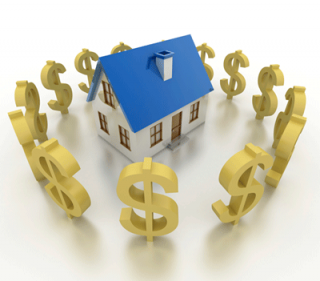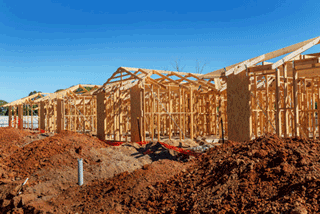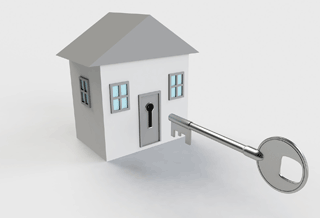Quote of the Week
“The increase in the value of residential real estate has put Australian homeowners in a strong equity position, with the RBA estimating just 1.3% of housing loans to be in a negative equity position at the start of 2021.”
CoreLogic head of research, Eliza Owen
Value Of Homes Tops 8 Trillion
 Housing remains the nation’s largest asset class, well ahead of shares, superannuation and commercial developments, as residential property prices continue to rise.
Housing remains the nation’s largest asset class, well ahead of shares, superannuation and commercial developments, as residential property prices continue to rise.
The total value of residential real estate in Australia has reached $8.1 trillion, according to CoreLogic, followed by $3 trillion of superannuation, $2.7 trillion of Australian listed stocks and $964 billion of commercial real estate.
“The Australian dwelling market has reached fresh record highs for the past four months and the end of April marked the first time the total value of Australian housing broke the $8 trillion mark,” says CoreLogic head of research Eliza Owen.
“This puts residential property at around four times the size of Australian GDP and $1 trillion more than the combined value of the ASX, superannuation and commercial real estate stock.”
CoreLogic data suggests that in the three months to April, national home values rose 6.8%, the highest quarterly growth since 1988.
Budget Expands FHB Scheme
 Treasurer Josh Frydenberg confirmed in this week’s Federal Budget that another 10,000 places will be added to the First Home Loan Deposit Scheme (FHLDS).
Treasurer Josh Frydenberg confirmed in this week’s Federal Budget that another 10,000 places will be added to the First Home Loan Deposit Scheme (FHLDS).
The incentive allows first-home buyers to buy a new home with a deposit of 5% without paying lenders mortgage insurance (LMI), with the Government guaranteeing the remaining 15%.
The FHLDS consists of 10,000 spots in each wave and the last wave saw the caps on the value of eligible new homes lifted to $950,000 in Sydney and $850,000 in Melbourne. In the other capital cities participants could buy properties worth $550,000.
The Budget also lifted the maximum amount of superannuation contributions that can be released under the First Home Super Saver Scheme to be used to save for a first-home deposit – from $30,000 to $50,000.
“It is about giving people the opportunity to get into the market,” says Frydenberg.
No Budget Change On Tax Matters
 Those with a stake in the Australian property market can sleep easy after the official delivery of the 2021 Federal Budget. While the 2021 budget includes a number of measures relevant to property investors, it doesn’t change existing arrangements on negative gearing nor does it touch capital gains tax.
Those with a stake in the Australian property market can sleep easy after the official delivery of the 2021 Federal Budget. While the 2021 budget includes a number of measures relevant to property investors, it doesn’t change existing arrangements on negative gearing nor does it touch capital gains tax.
The lack of action on negative gearing, was largely foreseen by property experts, with Right Property Group’s Viktor Kumar commenting that “parties don’t mess around with property and tax pre-election. If they do, they get annihilated at the elections”.
A new ‘Family Home Guarantee’ has been introduced. This will allow up to 10,000 single parents to purchase a home with as little as a 2% deposit over the next four years. The scheme comes into effect from 1 July 2021 and is subject to a similar price cap system as the existing First Home Buyers scheme.
The FHLDS (New Homes) scheme, launched last year, will be expanded for a second year, providing an additional 10,000 places in 2021-22.
194,000 Homes To Be Built This Year
 Residential construction across Australia will surge to 194,000 new homes this year and continue at a rapid pace into the middle of 2022, countering a 10.6% fall in commercial activity.
Residential construction across Australia will surge to 194,000 new homes this year and continue at a rapid pace into the middle of 2022, countering a 10.6% fall in commercial activity.
Forecasts by Master Builders Australia suggest residential construction will rise to 194,257 homes by July 1, reflecting the impact of HomeBuilder which also drove a 12.4% increase in home renovations. The MBA also predicts strong residential construction activity in 2021-22 with 151,754 new builds.
The lobby group, representing the $200 billion building and construction sector, had painted a gloomy picture at the height of the pandemic last year, suggesting only 115,822 builds. The MBA’s final prediction is now expected to exceed 2019-20 construction levels by 13.4%.
It expects the number of HomeBuilder applications will come in at 130,000 when the final numbers are released. The value of residential construction work directly supported by HomeBuilder is expected to peak at $39.36 billion and 355,145 full-time jobs.
Vacancy Rate Drops To 1.9%
 The national residential rental vacancy rate dropped to 1.9% in April from 2.1% in March and from 2.6% a year ago, according to SQM Research. Six of the eight capital cities have vacancy rates below the national average of 1.9%, including five which are below 1%.
The national residential rental vacancy rate dropped to 1.9% in April from 2.1% in March and from 2.6% a year ago, according to SQM Research. Six of the eight capital cities have vacancy rates below the national average of 1.9%, including five which are below 1%.
SQM’s Louis Christopher says suburban vacancy rates continue to fall and “landlords are demanding huge rent hikes in some locations including the Gold Coast and North Coast NSW”.
The total number of vacancies Australia-wide is now 66,411 residential properties, down from 72,436 in March. Melbourne’s vacancy rate fell to 4.0% in April from 4.4%, while in Sydney it dropped to 3.1% from 3.4%.
In Perth, Adelaide, Canberra, Darwin and Hobart, the vacancy rate remained below 1.0%, while Brisbane’s fell to 1.4%. But in the Sydney CBD and Melbourne CBD, vacancy rates jumped to 7.3% and 8.3%, respectively, given with apartment oversupply.




